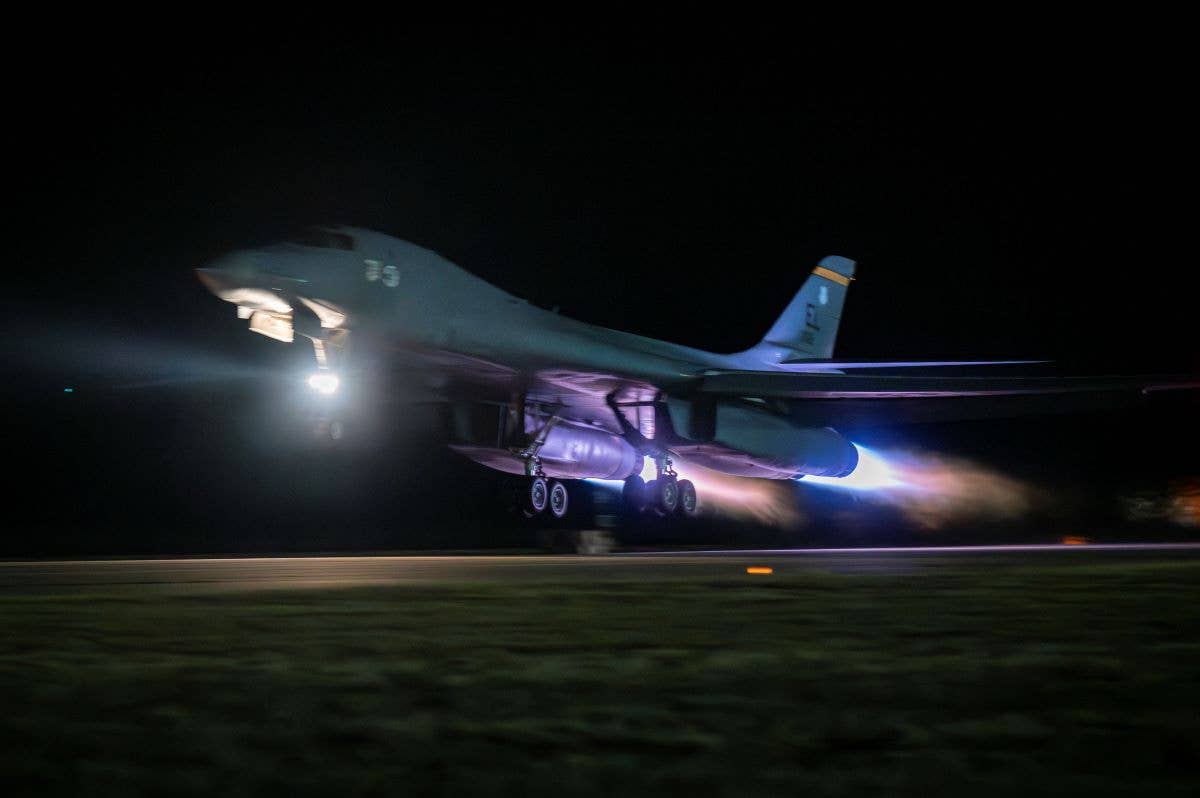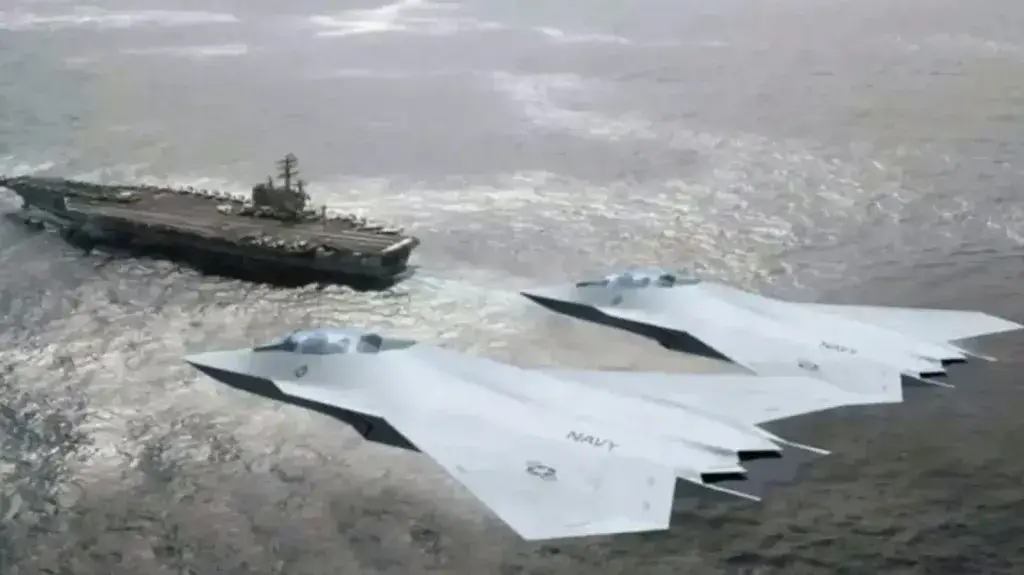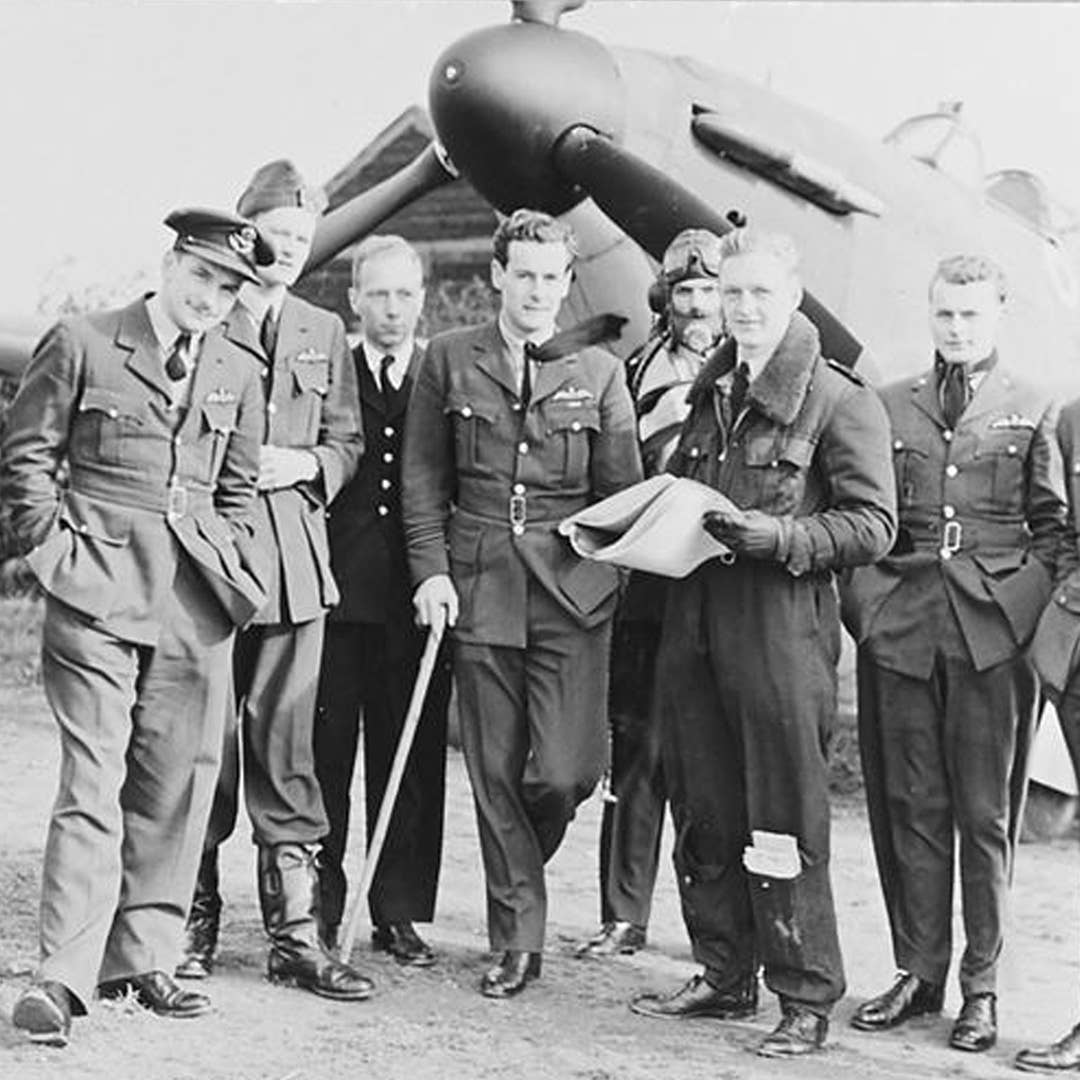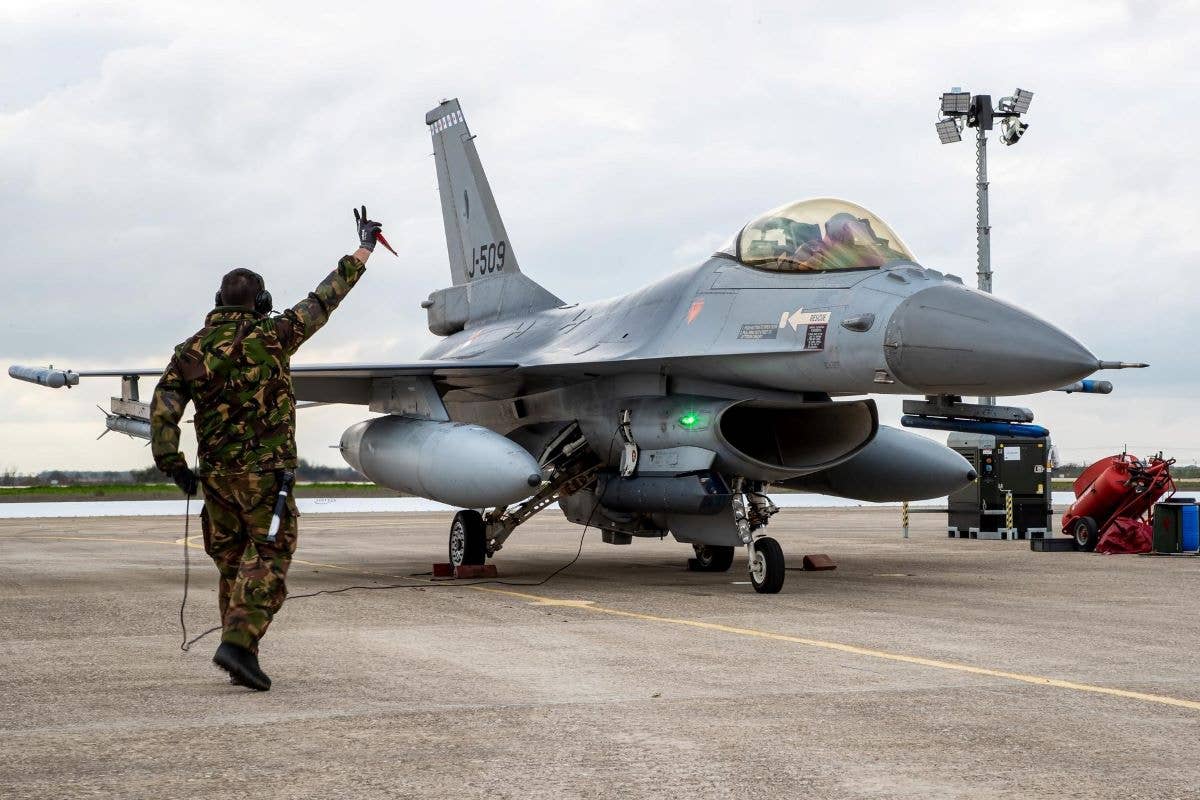B-1Bs Begin Return to Ellsworth AFB Following Airstrikes
The long-range bombers had temporarily been relocated to another air base after a crash investigation shut down the runway.

A B-1B Lancer from Ellsworth Air Force Base, South Dakota, takes off from the runway at Dyess Air Force Base, Texas, on February 1. Ellsworth B-1Bs recently launched from Dyess Air Force Base to conduct precision, long-range strikes in Iraq and Syria. [Courtesy: U.S. Air Force]
The runway at Ellsworth Air Force Base, South Dakota, has resumed operations one month after a B-1B Lancer heavy bomber crashed on the airfield while landing, according to a report.
Runway operations were shuttered after the January 4 mishap that occurred as an Air Force B-1B flying as part of a formation crashed during the landing phase. All four aircrew on board the bomber ejected safely. The runway was temporarily reopened January 25 to move “several” B-1Bs assigned to the base to Dyess AFB near Abilene, Texas.
Nearly two weeks later, what remained of the crashed aircraft that was severely burned and skidded off the runway has been cleared, and bombers are starting to return to Ellsworth AFB, Air & Space Forces magazine reported.
The relocation of an undisclosed number of heavy bombers and about 250 aircrew, maintainers, and logistics support personnel to the Texas air base "proved that this weapon system is mission capable," said Colonel Derek Oakley, commander of the 28th Bomb Wing.
The relocated B-1Bs were deployed from Dyess AFB on February 1 as part of a barrage of airstrikes in Iraq and Syria targeting Iran’s Islamic Revolutionary Guard Corps (IRGC), Quds Force, and Iranian-backed militia groups, the bomb wing has confirmed.
The airstrikes, which began around 4 p.m. EST February 2, targeted seven facilities and employed more than 125 precision munitions as retaliation for a one-way-attack drone strike on a remote outpost in Jordan, killing three U.S. Army Reserve soldiers and injuring more than 40 others.
Airmen from the 7th Munitions Conventional Maintenance shop move Joint Direct Attack Munitions onto a trailer before being transported on the flightline at Dyess Air Force Base, Texas, January 31, 2024. [Courtesy: U.S. Air Force]
B-1 crews at Ellsworth and Dyess routinely conduct missions together as part of the Air Force Global Strike Command's Bomber Task Force (BTF), the Air Force said.
“Teaming with our fellow strikers at Dyess to accomplish the mission is a testament to what we are able to do while further enhancing interoperability and improving our collective readiness,” Oakley said. "The mission we conducted validated that we can respond to any threat anywhere on the globe."

Sign-up for newsletters & special offers!
Get the latest FLYING stories & special offers delivered directly to your inbox






